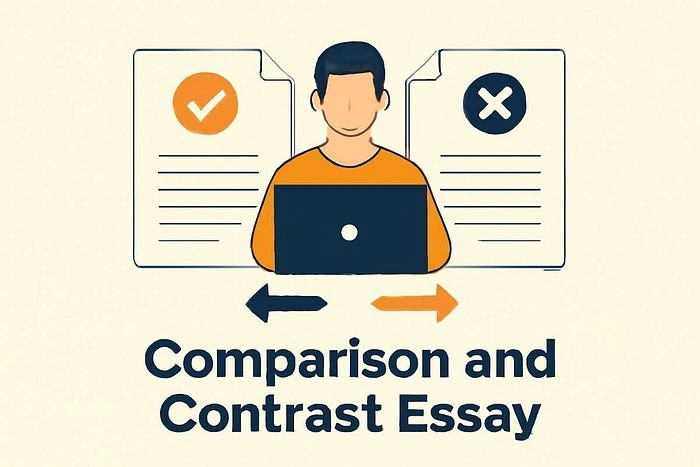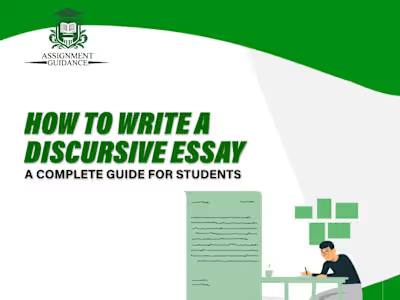Comparison and Contrast Essay Guide

Effective Comparison and Contrast Essay Guide for thesis statement.

A comparison and contrast essay in academic writing focuses on evaluating both the similarities and differences between two or more subjects. These subjects could include historical events, literary works, or scientific theories. The goal of this writing style is to establish connections while also identifying differences to enhance the reader’s understanding of the topics. Such essays may prioritize either the connections between subjects or highlight their differences more. The thesis in a comparison and contrast essay plays a crucial role in guiding the essay by synthesizing both subjects’ importance and the need for a complex evaluation.
The Role of the Thesis
A strong thesis statement is essential for academic writing as it sets the tone for the entire paper, indicating the direction and main argument. In a comparison and contrast essay, the thesis statement holds special importance. It should do more than simply introduce the topics; it must explain why these topics are suitable for comparison and outline their key differences and similarities. Additionally, the thesis needs to specify the method of analysis to help the reader understand the structure and approach of the paper.
The Unique Nature of This Thesis
In comparison and contrast writing, the thesis must reflect the dual nature of the analysis, as it involves examining multiple subjects simultaneously. The thesis should define the subjects being analyzed and explain which aspects of each will be compared and why these comparisons are significant. It must also highlight the organizational approach that will guide the essay, giving readers clarity on the structure and flow of the arguments.
Naming the Subjects
An effective thesis for a comparison essay requires the clear identification of the subjects being compared. The writer must introduce the subjects in a way that helps readers understand their relationship and the rationale behind comparing them. If the essay compares two novels, for example, the thesis should specify the titles of the novels and focus on key comparison points such as themes, character development, and narrative style. Any comparison between dissimilar subjects must be justifiable, with clear reasoning behind why the comparison is made.
Establishing Comparison Grounds
The thesis needs to specify the criteria for comparison. These criteria could include thematic elements, structural features, or practical implications, depending on the essay’s focus. The writer should select particular aspects of the subjects to investigate thoroughly, rather than comparing every possible element. A well-constructed thesis guides the essay by indicating which traits will be compared in depth, helping the writer maintain focus and ensuring that each subject is given a fair evaluation.
Stating the Central Idea
A strong thesis should convey the central idea or the core message of the comparison. It should highlight the most significant similarities or differences between the subjects and explain why these aspects are important. This central idea gives the essay a clear purpose and helps readers understand the value of the comparison. The thesis should inspire thought and encourage the reader to engage with the analysis that follows.
Creating a Clear Structure
The thesis statement also indicates the organizational method of the essay. Two common methods for structuring compare and contrast essays are the block method and the point-by-point method. In the block method, each subject is discussed separately before moving on to the next, while the point-by-point method involves comparing aspects of both subjects side by side. The thesis should clearly specify which structure will be used, so readers understand how the comparison will unfold.
Choosing the Right Language
The language used in the thesis statement is crucial for signaling the nature of the comparison. Phrases like “on the other hand,” “similarly,” “while,” and “in contrast” indicate that the writer will be analyzing relationships and differences between the subjects. This choice of language helps the reader anticipate the types of comparisons that will be made and the analytical approach the writer will take.
Avoiding Imbalance
One common mistake in comparison and contrast essays is an unbalanced thesis, where one subject is given more attention than the other. It is important to ensure that both subjects are analyzed equally, unless there is a valid reason to prioritize one over the other. An imbalanced thesis can confuse readers and create a sense of unfair treatment, so it’s essential to maintain balance and provide a fair examination of both subjects.
Avoiding Vague Language
A vague or overly broad thesis is a common pitfall in comparison and contrast writing. A weak thesis lacks clear direction and makes it difficult for the reader to understand the purpose of the comparison. To avoid this, the writer should strike a balance between providing enough detail and keeping the thesis focused. A specific, well-defined thesis ensures that the essay stays on track and provides meaningful analysis.
Maintaining Analytical Focus
The thesis of a successful comparison and contrast essay should be analytical, not merely descriptive. Instead of listing traits or features of the subjects, the thesis should indicate that the writer will be examining the deeper meanings and implications of these traits. An analytical approach ensures that the comparison leads to new insights and enriches the reader’s understanding of the subjects.
Revising for Clarity
Writing a strong thesis often requires revision. The first draft of the thesis may be too vague or not fully aligned with the essay’s argument. It’s important to revisit the thesis to ensure it clearly reflects the main points and supports the essay’s analysis. Through revision, the writer can refine the thesis to ensure it serves as a strong foundation for the entire paper.
Conclusion
Crafting an effective thesis statement for a comparison and contrast essay requires careful thought, precision, and a deep analytical approach. The thesis should clearly outline the subjects being compared, the criteria for comparison, and the method of analysis. A well-written thesis guides the reader through the essay, ensuring that the comparison is meaningful and well-structured, ultimately resulting in a more coherent and insightful argument.
Like this project
Posted Jul 26, 2025
Guide on crafting effective comparison and contrast essays.
Likes
0
Views
2
Timeline
Jul 26, 2025 - Sep 26, 2039
Clients

Assignment Mentor









